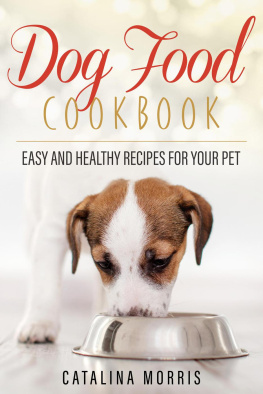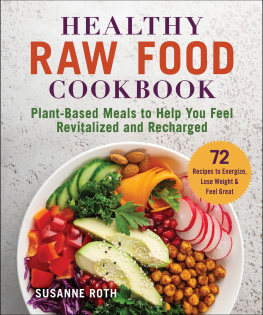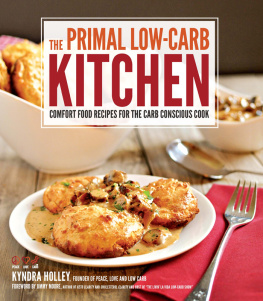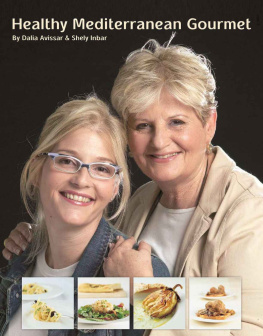Contents
Guide
Q: Are you vegan, vegetarian, Paleo, gluten-free and/or dairy-free?
A: I personally dont follow any strict diet, except a gluten-free one because I cant tolerate gluten. I try to minimize my dairy intake, but I dont eliminate it completely. When I use dairy, I opt for grass-fed and raw (cheese).
My food philosophy overall is to seek balance and use whole foods. I dont count calories. I try to stay mindful of portions and listen to my hunger cues. Some days, I eat more plant-based; other days, I eat more animal-based.
Q: What basic tools does a foodie need to be successful in the kitchen?
A: Here is a list of my top essential kitchen tools:
One good, solid, sharp knife
One good serrated knife
Saucepans in a few different sizesat least one small and one large. I prefer cast iron. I dont like to use nonstick pans, as the coating eventually breaks down and releases toxins.
One or two wood cutting boards
Measuring spoons
Liquid measuring cups and solid measuring cups (there is a difference)
Wooden spoon(s), spatula and whisk
Food processor
Hand grater
Electric hand mixer or stand mixer (optional)
Mixing bowls of a few different sizes
Two sheet pans
One muffin pan and/or loaf pan
Q: What are your favorite kitchen tools to make it easier to cook real food every day?
A: Here are the tools I recommend:
Air fryer: I use my Ninja Foodi Grill (it has multiple functions) daily.
Pressure cooker: This is really good to have for making things that you would typically make in a slow cooker, but much faster. I recommend Ninja or Instant Pot.
Quality blender: You can get a high-speed blender of good quality for about $200. The cost justifies the result of the food blending and texture. If you want one that is going to not only get great results, but also last, youll be spending between $400 and $600. I recommend a Blendtec.
Immersion blender: One of these is good to have, especially if you dont already have a quality high-speed blender. This works well for soups and sauces.
Ice-cream maker: You can make your own flavors using ingredients that work for you. I recommend Cuisinart.
Stand mixer: If youre baking and making dough, it saves your manpower and mixes ingredients together well. I recommend KitchenAid.
Kitchen scale: Makes portioning easy, and I swear by it for baking. Any inexpensive scale will do.
Q: Is it better to purchase two great knives of quality or purchase a less expensive knife set that is complete?
A: You should always have on hand one great sharp knife and one great serrated knife. I recommend spending money on a good-quality knife, as opposed to a cheap set. I cooked for years without a good knife. It makes the process longer and the cuts less precise. Youre also more likely to cut yourself! Spend the money and invest in building your kitchen tool set for quality over time, if budget is a concern.
Q: What is your preferred method of frying for a healthier option?
A: Air frying, using an air fryer appliance, is my go-to. Youll get the crispy outside and the moist inside similar to deep-frying in oilbut without the oil. Its the new, healthier way to fry food that doesnt sacrifice taste and is much less messy.
Q: How do you clean cast iron?
A: Never scrub cast iron with soap and a sponge! Simply let the piece cool, then clean it with water. If there is any food residue on the surface, leave the pan to soak in water and baking soda. Then, scrub with coarse sea salt to get rid of anything stuck to the surface. Using the baking soda and salt cleaning method, I have revived pans over 60 years old!
After youre done cleaning, always reseason it (you will also need to season it when you first buy it). Seasoning the pan strengthens and builds up a nonstick surface over time. Wipe out and blot away all the water. Then, use a paper towel and a neutral cooking oil, such as olive or avocado oil, to wipe over the surface of the pan. This will keep it moisturized. Avoid cooking acidic foods, such as tomatoes, as these can remove the pans oil-derived nonstick coating.
Cast iron should literally last forever if you take care of it. You can often find good inexpensive pans (if you live in the US) at TJ Maxx and HomeGoods. Sometimes, you can snag some good finds at yard sales.
Q: How do I manage storing leftovers and batch-cooked foods?
A: For leftovers and meal prepping, I use glass food storage containers, which you can find in various sizes with different kinds of lids. They can be used to meal prep individual meals after batch cooking for the week, and they can be stored easily in the freezer. I also use Mason jars to store sauces, prepared salads and even prepared veggies. Mason jars are a great vessel for storing homemade nut milks and oils (such as homemade ghee; see ). They are an inexpensive way to store leftovers and freeze soups and sauces as well (just never fill to the very top when freezing sauce and soup, because liquids expand when frozen).
For sandwiches and other baggable items, I like to use Stasher Bags made from silicone, which can be reused.
Q: What are the most valuable real food ingredients I should stock in my kitchen?
A: I always try to have these ingredients on hand:
Coconut aminos, liquid aminos
Apple cider vinegar
Himalayan pink salt, sea salt
Grass-fed butter, olive oil, coconut oil
Lemons, limes
Nut butter, tahini
Honey, pure maple syrup, coconut sugar, stevia
Coconut, almond and gluten-free flour; oats
Frozen fish, meat, eggs
Fresh herbs
Fresh and frozen vegetables
2 or 3 fresh fruits, frozen fruits
Onions, garlic
Unsweetened cocoa powder, chocolate chips, dark chocolate
Dairy-free milk (I prefer coconut, cashew or almond milk)
Bone broth (I get mine frozen)
Gluten-free bread, tortillas
Plain (unsweetened) yogurt (dairy or nondairy)
Q: I have nut allergiesdo some recipes that call for nuts have replacement equivalents?
A: You can always omit the nuts in a recipe that includes them as a topping, or use sunflower or pumpkin seeds if you want that crunch as a replacement. For recipes that use nut butters, I recommend using either tahini or sunflower seed butter, as they will work in a similar manner. Silken tofu can also sometimes work to replace raw cashews in a sauce.
Q: What type of salt do you recommend?
A: I always use either Himalayan pink salt or sea salt. These salts are less refined, and they have a milder flavor. They are also loaded with beneficial minerals. All the recipes in this book were tested with one of these salts.
Q: How do you store avocado for future use?
A: Put the leftover avocado, still in its peel, into a lidded container and add the removed peel and pit. Store it in the fridge and it should stay good for a few days. When ready to eat it, simply cut the brown part off. If you ever cut open an avocado too soon and its really hard, place it in the fridge. After a few days, it will ripen and still be green. Ripe avocados can also be frozen until ready to use!

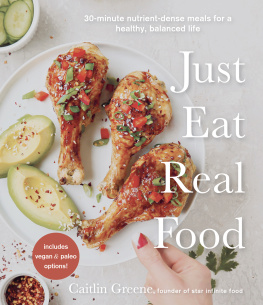




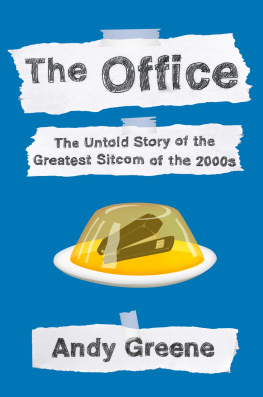

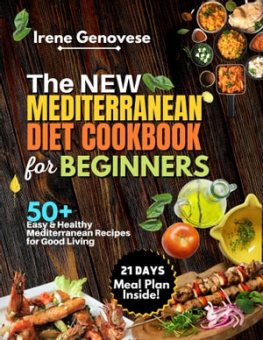

![Nicole Keshishian Modic - Love to Eat : 75 Easy, Craveworthy Recipes for Healthy, Intuitive Eating [A Cookbook]](/uploads/posts/book/358772/thumbs/nicole-keshishian-modic-love-to-eat-75-easy.jpg)
